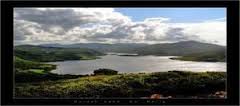Atlantic Way, what to do in kerry
Riasc Monastery Dingle County Kerry is an early Christian monastic site dating from the 5th rectangular oratory, plus some stone slabs engraved with exquisitely carved crosses.
Dingle Peninsula and Slea Head Tour takes approximately two and a half hours. Our Tour in Ireland guide will collect you from your accommodation. We have outlined our itinerary below.
Burnham House and Ogham stones homes to the late Lord Ventry’s estate. Lining the driveway entering the estate are seven ogham stones.
Ventry Harbour Dingle opens up as you head along the Slea Head Drive. With its glorious crescent blue shaped beach, swimming, shore angling and horse riding are popular here.
Dún Beag Fort or Dunbeg Fort a 500 BC Archaeological Site is an impressive and elaborate example of a promontory fort. Its location makes it one of the most dramatic archaeological sites in Ireland.
The Fahan Group Beehive Huts comprises of 19 souterrain and 18 standing clocháns (beehive huts). There are also inscribed stones, sculptured crosses and earthen ring forts.
The Blasket Islands in Kerry are a group of islands off the Dingle Peninsula. The main island (An t-Oileán Tiar) was inhabited by a completely Irish speaking population until 1953. The inhabitants were evacuated to the mainland (Dún Chaoin) on the 17th November 1953.
Coumeenole Beach was used as one of the locations for the filming of Ryan’s Daughter. It also has some breath-taking views of the Blasket Islands.
Gallarus Oratory in Kerry Ireland the most perfect example of about twenty such oratories in Ireland. Gallarus Oratory is thought to have been built in the 9th beehive huts to the rectangular churches found later.
Killmakeadar Church, is an example of a fine Romanesque church built on the site of an earlier church of St. Maol Cathair. The church had a corbelled roof. The east window is known as Cró na Snaithide or eye of the needle and pilgrims were supposed to squeeze through it to be saved.
